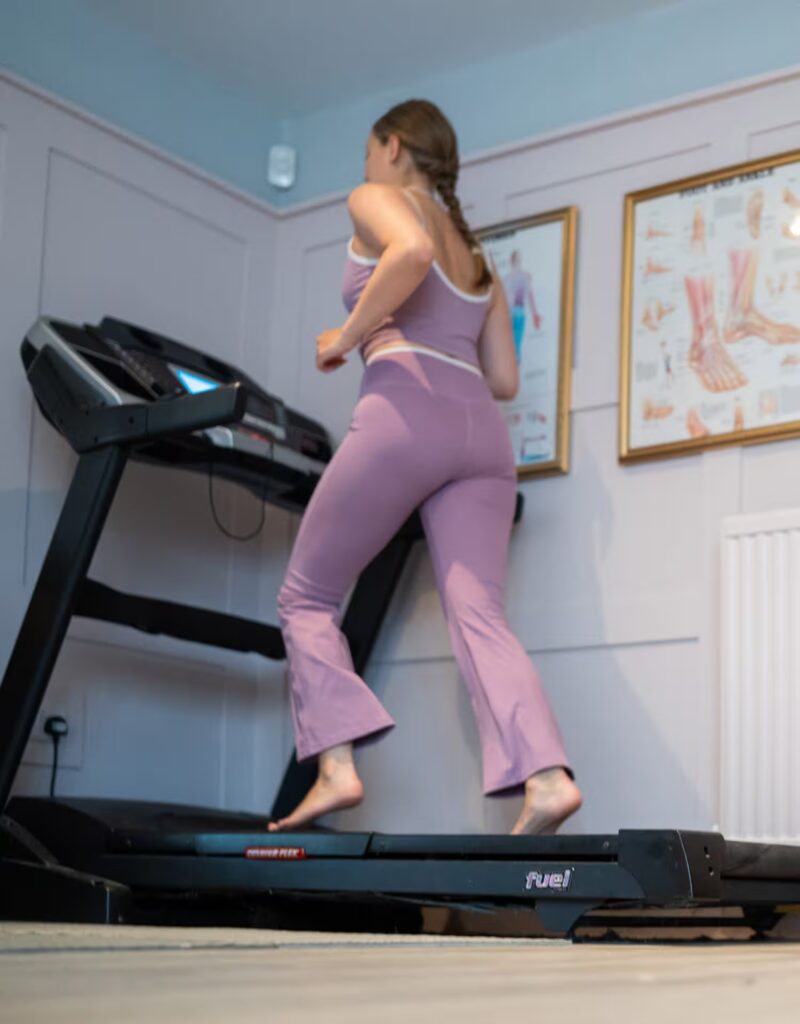Service
Running Gait Analysis
Gait assessment is a key part of how we assess lower limb injuries and movement issues and where appropriate we will include this as part of our physiotherapy assessment. Whether you’re recovering from injury, struggling with pain, or just want to improve how you move, a gait analysis can give real insight into what’s going on. We look closely at your walking or running pattern to pick up subtle imbalances, compensations, or joint issues that may be contributing to symptoms or holding you back from performing at your best.


Who Typically Benefits From Gait Analysis?
Gait analysis is ideal for anyone with lower limb pain, especially in the feet, ankles, knees, hips, or lower back. It’s often used with runners, walkers, athletes, or people who are on their feet a lot at work or in daily life. If you feel like one side of your body is doing more work than the other, or you’re picking up repetitive niggles in your legs or back, this could be for you.
It’s also a great tool for people recovering from surgery or injury who are looking to return to activity. Even small gait changes can make a big difference in managing load and improving efficiency. At Back to Fitness Physio, we use it to uncover the root cause of your movement issues — not just treat the symptoms.
What Does Gait Analysis Involve?
We always start with a thorough history — understanding your symptoms, injury history, activity levels, and goals. Then we move into functional testing, where we look at things like double and single leg squats, balance, hopping, and any other relevant movements to see how your body performs under load.
After that, we’ll ask you to run (or walk, if that’s more relevant) barefoot on the treadmill. We’ll take a video of your gait from different angles, which allows us to break things down in slow motion and spot movement patterns that might not be visible at full speed. You’ll need to be comfortable being filmed — it’s stored securely, in line with GDPR, and nobody else sees the footage apart from your physio.
From there, we analyse your technique, sometimes using dynamometry to check strength if needed, and then discuss what we’ve found. You’ll come away with a clear rehab plan tailored to your movement profile and goals, and we’ll coach you through specific technique changes or strength work to help you move more efficiently and reduce injury risk.
Benefits and Outcomes of Gait Analysis
A gait assessment gives us insight into how your body moves as a whole — not just in isolation. The aim is to improve movement efficiency, reduce injury risk, and address the root cause of your pain or performance issues. By picking up imbalances or overload patterns early, we can prevent small niggles from becoming big problems.
This isn’t just useful for elite runners. We use gait analysis every day in the clinic to help people walk better, reduce limping, return to exercise post-injury, or stop re-injury cycles. It’s a brilliant tool for helping people feel stronger, more confident, and in control of their movement again.
Faq's
Gait Analysis FAQs
What can gait analysis reveal about my walking or running?
It can show us if you’re compensating, overstriding, lacking control at certain joints, or favouring one side. These movement patterns might be linked to your current pain or risk of future injury.
How long does a gait analysis session take?
If it’s part of a physio appointment, it’s included within the standard session time. As a stand-alone session, allow around 60 minutes.
Is gait analysis suitable for all ages?
Yes — we regularly assess older adults, active teenagers, and everyone in between. If someone is walking or running and struggling with pain, gait analysis can help.
Do I need any special equipment or clothing for a gait analysis?
Just wear what you’d normally exercise in. Shorts or leggings and a t-shirt or vest are ideal so we can see how your body is moving.
How often should I have a gait analysis done?
It depends on your goals. Some people have one assessment to guide rehab, while others (like runners or performance athletes) might come in every few months to refine technique or manage injury risk.
How can the results of a gait analysis improve my performance or reduce injury risk?
By spotting faulty movement patterns or weak links, we can build a tailored plan to improve control, efficiency, and strength — which means fewer niggles and better performance, whatever your activity level.
What if I’m scared of using a treadmill?
You’re not alone — lots of people feel nervous about running or walking on a treadmill, especially if they haven’t used one before. We’ll never rush you into it. If you’re unsure, we’ll take the time to get you comfortable and start at a pace that feels safe. You can hold the rails to begin with, and we’ll be right beside you throughout. If treadmill use really isn’t right for you, we can still get plenty of valuable insights from other movement assessments — there’s always another way.